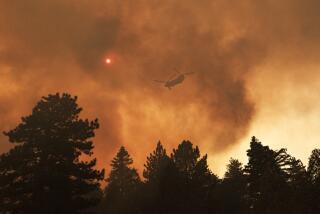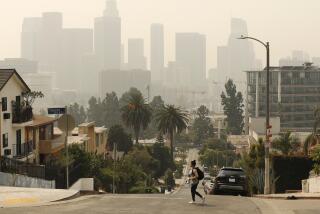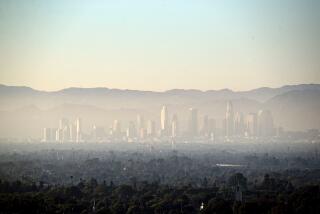EPA Admits Radiation in U.S. May Be 3 Times What It Said : Maintains Even That Amount Not Harmful to People
- Share via
WASHINGTON — The Environmental Protection Agency conceded that the air many Americans have been breathing since the Chernobyl nuclear accident may have had three times the radiation the agency reported.
But even at the higher readings, the radiation is still not hazardous to human health, EPA said Monday.
The discrepancy occurred because most EPA equipment was only measuring airborne particles of radioactive iodine-131. Not being trapped and measured were gaseous compounds containing the substance which almost certainly were present, the agency said.
EPA radiobiologist Neal Nelson said readings at the EPA’s Montgomery, Ala., lab detected radioactive iodine compounds at concentrations 1.5 to 3.5 times greater than the tiny particles of iodine-131 itself detected on fiber filters.
‘Ratio Holds Anywhere’
“This ratio probably holds anywhere,” he said.
According to EPA spokesman Chris Rice, “Even given this fact, airborne radioactivity has been extraordinarily low and far below levels requiring protective action.”
The admission came following statements by New York City advocacy groups, led by Accord Research and Educational Associates Inc., that EPA should have been multiplying its dose estimates by a factor of eight.
Richard Piccioni of the group said the factor of eight was an average derived from measurements made by the Oregon State Health Department that showed total breathable compounds of iodine-131 present in concentrations anywhere from 4.5 times as much as iodine-131 itself to 15 times as much.
No Charcoal Filters
Most EPA monitoring stations do not have the charcoal filters necessary to trap gaseous compounds and can measure only radioactivity present on fine solid particles trapped on fiber filters, Rice said.
Stations of the Nuclear Regulatory Commission and the Energy Department can measure gaseous compounds, he said, and the EPA began reporting a backlog of those readings during the weekend.
According to the EPA, air contaminated with one picocurie per cubic meter of iodine-131, if breathed for a year, would mean a radiation dose about equal to one-third of a chest X-ray. Few EPA airborne particle readings have approached one picocurie.
More to Read
Sign up for Essential California
The most important California stories and recommendations in your inbox every morning.
You may occasionally receive promotional content from the Los Angeles Times.













